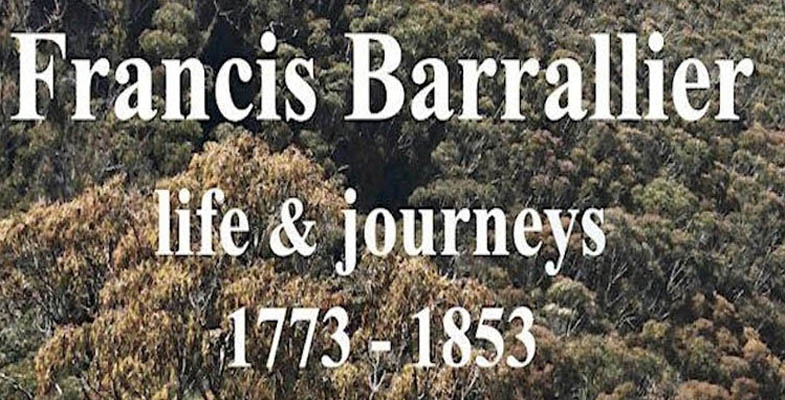I personally got interested in the Francis Barralier story by an indirect route. I found that much of the gravels, like those at Penrith Lakes, that have flooded down across the inner Sydney Basin had been washed from a vast Devonian age volcanic formation called the Barrallier Ignimbrite of the Wollondilly Valley in a district known as Barrallier. So we visited the area via the Wombeyan Caves road and also read a version of his diary of attempts, in 1802, to penetrate and cross the Blue Mountains. All useful background, and an introduction to the challenging terrain, but this new book is currently the best source for information and the whole historic setting.
Barrallier and his party set up a depot at Nattai and made three journeys that could be termed ‘excursions’ or ‘incursions’ depending on one’s point of view. The motives were complex, stimulated by Governor Phillip King’s curiosity, and framed by the knowledge of the times, the confronting physical presence of the Blue Mountains and what lay beyond. But the concept of meeting the ‘King of the Mountains’ was also in the thoughts of the time.
The first journey in November 1802 was investigative and followed the Nattai River down to its confluence with the Wollondilly, which they crossed and made an attempt to climb Tonalli Peak, a fearsome, projecting sandstone cliff flanked by blocks and debris. They failed but shot a rock wallaby for food. They were impressed by its sense of balance and ‘mountain goat’ terrain ability – and this was possibly the first European sighting of this animal.
Barrallier's second journey, November to December 1802, was the big one. His party began by following the earlier route to the lower slopes of Tonalli, then proceeded westwards following the Tonalli River and valley past the locality now known as Yerranderie (which became a silver mining settlement). They climbed through the narrow Byrnes Gap and descended to the Kowmung River, crossing it and following tributaries Christys Creek then Wheengee Whungee Creek. This became an increasingly a tough route, rocky, and with waterfalls and ravines, and I should highlight here that they were not in typical Blue Mountains horizontal sandstone country but folded Devonian Lambie Group basement terrain of folded conglomerate, sandstone and shale – quite a different challenge. And this brought the journey to a halt at Johnston Falls. At 30 metres, this waterfall below Kanangra Walls is substantial and there’s an impressive picture in the book that indicates why it stopped them. And the option of climbing out to the Boyd Plateau was not on the table in dry, December heat. They finally gave up and turned back.
Some people have misunderstood the failure to have been due to breach of Aboriginal tribal territory but this wasn’t the case. Their relationship with the locals was mixed and eventful but had positive elements, including employing essential guides like Gogy and Boodbury. Negative aspects include cases of ‘domestic abuse’ particularly by Gogy of his female partner, and the burning of the Nattai depot huts. Botanist George Caley features in the book too through an incident in which accusations of shooting at Aborigines were aired, though not supported by the accused. Barrallier’s recorded botanic observations aren’t of great consequence.
Note: Andy Macqueen has also written a fascinating book about the history of the Grose Wilderness and the saving of the Blue Gum Forest called Back from the Brink.
Andy Macqueen (self-published) 2024,
paperback, 247 pp, RRP $40
Available from This email address is being protected from spambots. You need JavaScript enabled to view it. or Blue Mountains bookshops.Review by John Martyn

